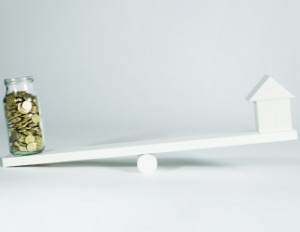Real estate vs. the stock market
There's been a lot of debate as to whether I should recommend real estate as an investment, given predictions of a 20% drop in housing prices. To prove that real estate can still be a smart investment decision I've examined potential returns of both…and the results may surprise you.
 Despite continuing predictions of a real estate crash in Canada, I still maintain that real estate is a good investment. One of the greatest benefits to real estate investing is that it’s probably one of the more accessible ways to invest using borrowed money.
Now, before you launch into the dangers of debt I want to point out that debt, in itself, is not inherently bad. While consumer debt—loans to pay for a car, a vacation, most home renovations, or other consumables—is a blight on a person’s potential net worth, it’s not in the same category as asset-backed debt. Asset-backed debt—loans secured by a potentially appreciating asset, such as real property, an RRSP, or a stock portfolio—can be a great way to use leverage to increase a person’s net worth. The caveats for leveraged investing include:
Despite continuing predictions of a real estate crash in Canada, I still maintain that real estate is a good investment. One of the greatest benefits to real estate investing is that it’s probably one of the more accessible ways to invest using borrowed money.
Now, before you launch into the dangers of debt I want to point out that debt, in itself, is not inherently bad. While consumer debt—loans to pay for a car, a vacation, most home renovations, or other consumables—is a blight on a person’s potential net worth, it’s not in the same category as asset-backed debt. Asset-backed debt—loans secured by a potentially appreciating asset, such as real property, an RRSP, or a stock portfolio—can be a great way to use leverage to increase a person’s net worth. The caveats for leveraged investing include:












Thanks for the analysis. However, how would the results differ when favoring taxes? For instance, in the scenario where the person rented but invested their down payment and additional contributions in a TFSA and/or RRSP, VS paying taxes on rental income and disposition of the property?
Due to the large volume of comments we receive, we regret that we are unable to respond directly to each one. We invite you to email your question to [email protected], where it will be considered for a future response by one of our expert columnists. For personal advice, we suggest consulting with your financial institution or a qualified advisor.